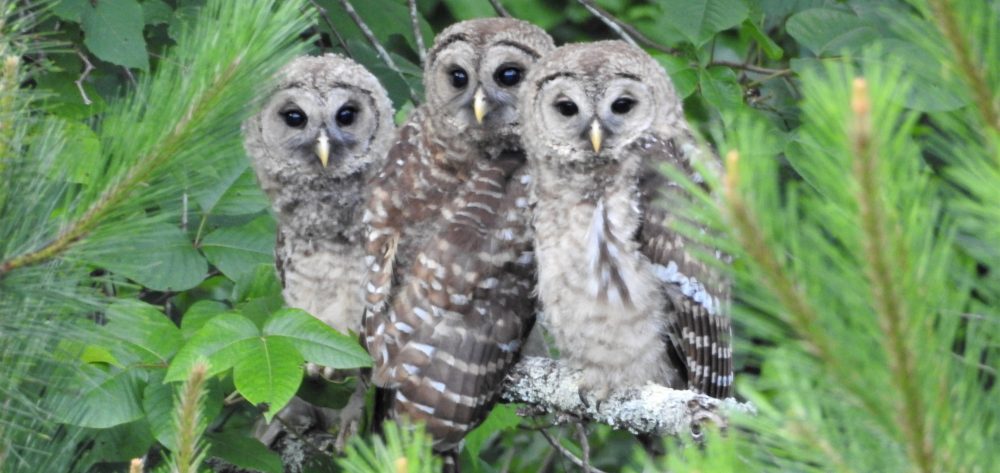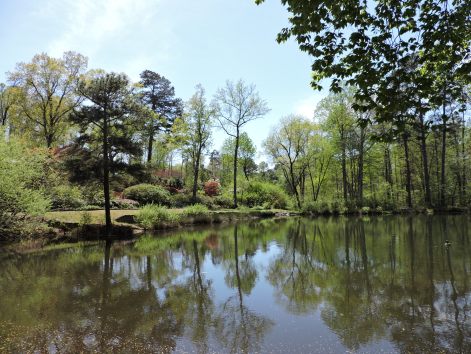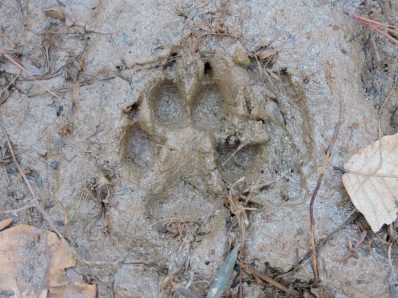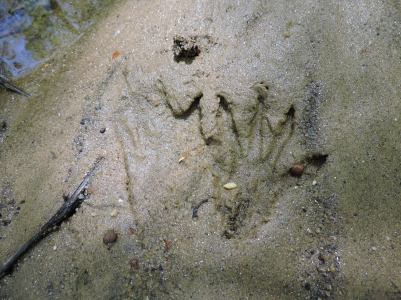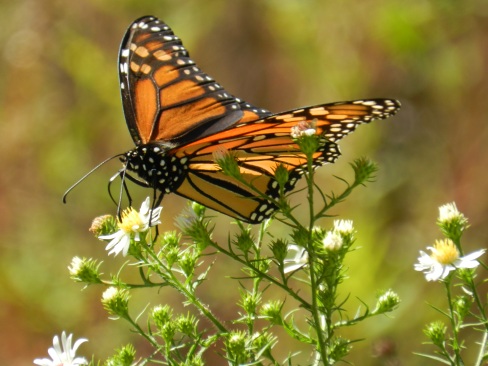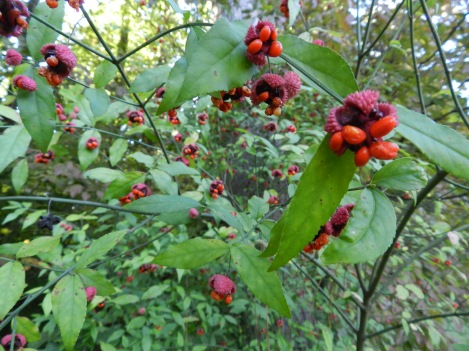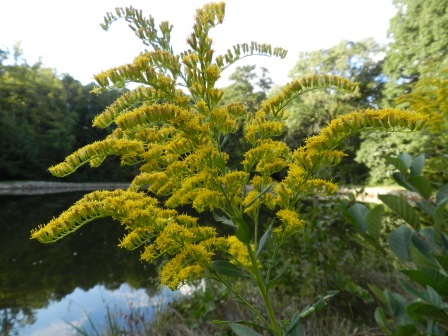I can’t believe it has been more than six months since I wrote my last blog post. It hasn’t been for lack of inspiration. Aside from the demands of careers and raising two middle-schoolers, my husband and I have been busy settling into our new home on 1.6 acres after the long process of zoning, designing, and building (and keeping our old house in pristine condition until it sold). Our “subdivision” (four lots, two currently undeveloped) also has shared access to a one acre lake and adjoins a large wooded park of more than 100 acres. I am in wildlife heaven. Although minutes away from conveniences, when I pull into our driveway at the very end of our street, I feel like I’ve entered a small patch of wilderness.
The backyard is a small “meadow” of untamed grasses and wildflowers that run down to a brushy area along a small stream, and towering trees surround the property. I have enjoyed watching all of the different plants and trees come into bloom and trying to learn what they are. We have lots of beautiful and beneficial native plants, which I’ve written about previously, although we also have invasive English ivy and Japanese honeysuckle, unfortunately. (I’m considering renting goats to tackle this problem). We’ve added our own mark to the landscape by planting blueberry bushes and fruit trees, including a native persimmon tree, which I’ve heard is a favorite with wildlife. The edges between the yard and wooded areas are lined with wild blackberry bushes, their blooms the promise of summer cobblers if the birds are gracious enough to share. The first shrubs I bought and planted were three native red buckeyes, which I’d learned are an important early food source for migrating hummingbirds. I had to laugh at myself when they bloomed a few weeks later—along with the dozens of other red buckeyes in the woods around the house. (If you want some, I can hook you up!)
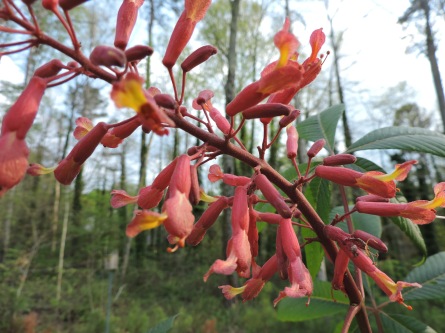
One of the native red buckeyes I planted (then discovered we have them everywhere!) This is an important early food source for hummingbirds on their northern migration.
Wildlife viewing is a daily pursuit in our new home. A pair of Red-tailed Hawks live nearby, and two Barred Owls call almost nightly. Four white-tailed does regularly pass through the yard, occasionally accompanied by a buck. Recently, we saw two gray foxes gamboling about in the backyard early one morning, though our occasional sightings are typically of a single individual, usually after dark. We’ve heard them rustling in the brushy area on the side of the house during the day a few times lately; the alarm calls of the chipmunks and squirrels give them away. Are they hunting during daylight hours because they have young mouths to feed? In addition to the foxes who share our home, we frequently find coyote tracks near the stream, as well as the tracks of opossums and raccoons.
The yard is bustling with bird activity, offering boundless opportunities for new discoveries—-my yard list is already up to 66 species! The thickets attract towhees, thrashers, wrens, and cardinals, while the tall, grassy areas attract sparrows, finches, and doves. Dead trees provide a bed-and-breakfast for woodpeckers, nuthatches, and chickadees, as well as snags for flycatchers to sally out to snatch insects in midair. Having the lake nearby means we never know when we might see our local Great Blue Heron fly through the backyard or hear the rattling call of kingfishers. Spring migration brought some delightful and unexpected surprises like Indigo Buntings, Rose-breasted Grosbeaks, Scarlet Tanagers, and a few species of neo-tropical warblers.

Female Rose-breasted Grosbeak. In sexually dimorphic species, the female is more camouflaged in order to blend in with her nest.
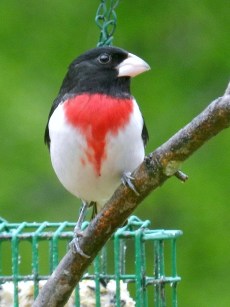
Male Rose-breasted Grosbeak–the brighter the better as far as the ladies are concerned.
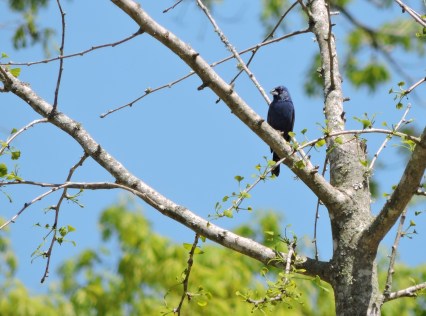
Male Indigo Bunting passing through on migration. This species will nest in the mountains of North Georgia and all the way up to southern Canada.
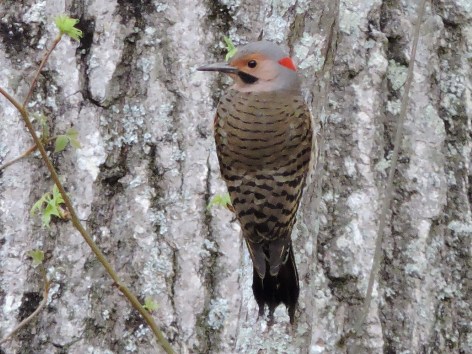
Northern Flicker, a local resident. This bird has gorgeous yellow feathers underneath its wings. Unlike other woodpeckers, it often feeds on the ground.
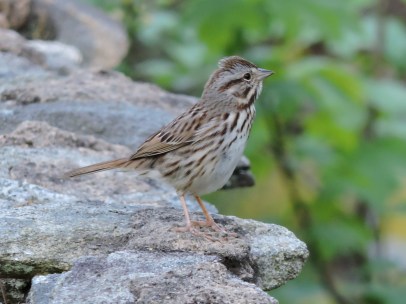
I wonder if this is the Song Sparrow that serenades me every morning. His morning song is different from the one he sings later in the day.
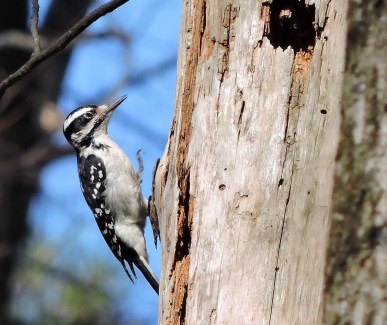
Hairy Woodpecker on a tree snag. Dead trees are actually “trees of life”–they provide food, shelter, and nesting places for birds.
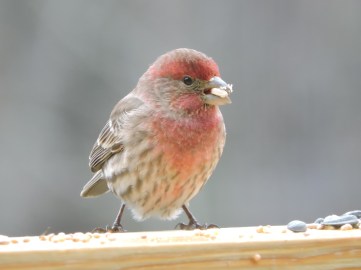
House Finch, another local resident. House Finches are not native to the Eastern United States. Captive birds were released on Long Island in the 1940’s by pet shop owners selling them as “Hollywood Finches” who wanted to avoid being persecuted under the Migratory Bird Species Act, which prevents citizens from keeping any native bird in captivity without a USFWS permit. The birds flourished and spread and are now naturalized in most of the United States.
Clearly I have plenty of inspiration for writing, yet what little free time I can carve out of my day is often spent just sitting outside on the porch quietly watching and listening to my surroundings. Who wouldn’t rather be outside enjoying nature than sitting at a computer writing about it anyway?! I feel gratitude daily for the opportunity to live in a place where I feel rooted in nature while staying connected to family and friends in our suburban community. I am thankful, too, that I can share this small patch of wildlife-friendly habitat with my wild neighbors. Creating such patches, even on a small scale, is one of the most important and empowering conservation actions that individuals can make, and collectively our actions can provide tremendous benefits for wildlife and the environment. You can even have your yard certified as a Backyard Wildlife Sanctuary, a designation I plan to pursue (once the goats take care of that invasive honeysuckle!).
I look forward to having lots more “wild” stories to tell. We’ve had some real excitement here this month watching the pair of Eastern Bluebirds that nested in our birdhouse, so stay tuned for an upcoming post documenting their story. You won’t believe what mama bluebird brought to the nest for her babies one afternoon! Thank you for sticking around, and look out for my next post soon.
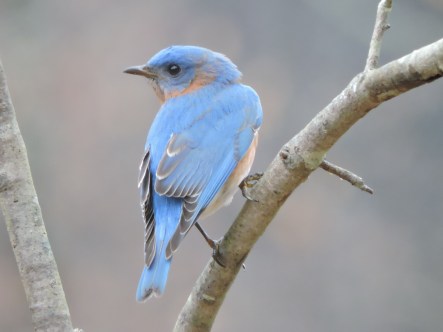
I’ve been watching this male Eastern Bluebird and his mate closely as they tend to their young. Stay tuned for a post about them soon!
*Note: Suburban Safari was actually the first idea I had for the title of my blog, but when I did a search for the name, I discovered that it was already the title of a book, which I proceeded to check out of the library and enjoyed reading very much. A review on Amazon says this about the book: “The suburban lawn sprouts a crop of contradictory myths. To some, it’s a green oasis; to others, it’s eco-purgatory. Science writer Hannah Holmes spent a year appraising the lawn through the eyes of the squirrels, crows, worms, and spiders who think of her backyard as their own. Suburban Safari is a fascinating and often hilarious record of her discoveries: that many animals adore the suburban environment, including bears and cougars venturing in from the woods; how plants, in their struggle for dominance, communicate with their own kind and battle other species; and that ways already exist for us to grow healthier, livelier lawns.”
